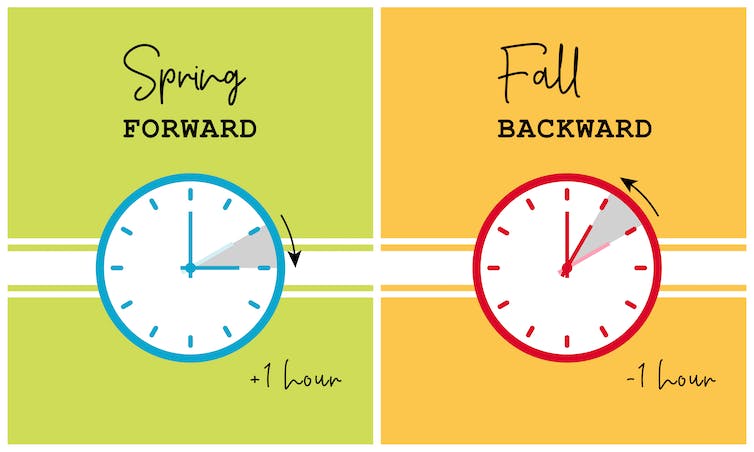From Daylight Saving Time to Standard Time
November 21, 2022
Did you wake up an hour earlier than you expected on Sunday, November 6th?
If you did, then you were not alone as many people found themselves in the same situation as they forgot that we had shifted from daylight saving tIme to standard time at 2 A.M. that Sunday morning.
This twice yearly ritual known as the bounce between daylight saving time and standard time has been happening since the early 1900s. It was first created by the German Empire during WWI. According to Olivia Waxman in the “Daylight Saving Origins,” it was made “in the hopes that it would save energy” during the war, in an attempt to use less electrical power and conserve more fuel. Waxman adds that later on in 1918, the first official U.S. law on daylight saving time “went into effect around a year after the country entered the war, for the same fuel conserving reasons.” Nowadays, the execution of moving the clocks forward an hour from standard time during spring allows more daylight during the summer, and changing it an hour back provides more light during winter mornings. Since 2007, the start of daylight savings has taken place on the second Sunday of March, and usually ends on the first Sunday of November, bringing us to standard time.
If you prefer daylight saving time then you may be in luck as The U.S. Senate recently passed legislation that would make daylight saving permanent in 2023, which would end the twice annual changing of clocks. This is known as the Sunshine Protection Act, a bill which was initially sponsored by Senators Sheldon Whitehouse and Marco Rubio. There has always been talk about making DST permanent, and an article by Kelly Tyko, “Clocks “fall back” Sunday: Blame Congress if you’re sick of it” claims that it was even once a done deal in the 1970s. Congress made it permanent but “the decision was reversed in less than a year after the early morning darkness proved dangerous for school children and public sentiment changed,” Tyko explains. On the other hand, early afternoon darkness during standard time can be just as dangerous as it gets dark early and can cause an increase in crime.
But it all comes down to one question: Is daylight saving time all year round beneficial? Some, like PB junior Maya Ogbogu, believe that DST all year is better since there is more daylight throughout the day. “I would love it if we always had daylight savings since early darkness in standard time leaves me less time to get things done. I also lose motivation since it is already dark at 5 PM.”
Early darkness is often tied to loss of motivation and can lead to seasonal depression as our bodies struggle to adjust to the shorter access to daylight. PB Junior Britney Bah agrees with Ogbogu and says “daylight saving time all year makes me feel like I have a lot of time during the day, and I do a sport so coming home when it is still light outside makes me feel better.”
It is not uncommon to hear that people enjoy the more daylight that DST provides, so the new legislation in the U.S. Senate seems to be popular and easily compatible with people’s lifestyles.
The switch from daylight saving time to standard time has caused minor changes in people’s lives, but will get used to it rather quickly as it just takes more adjusting. If and when President Biden proves the Sunshine Protection Act, people will enjoy their last standard time and savor their last extra hour of sleep, as daylight saving time will come back and be here to stay.













































